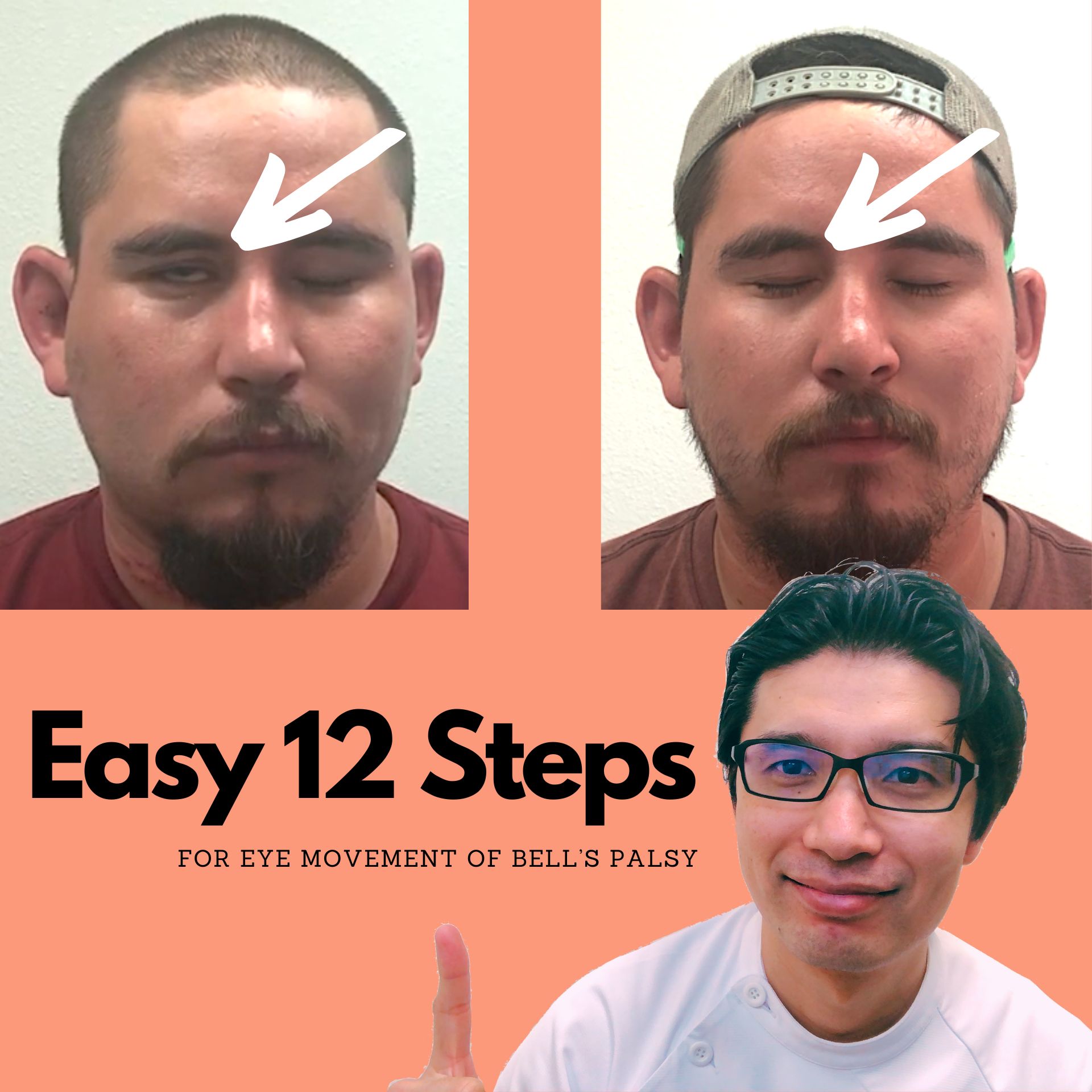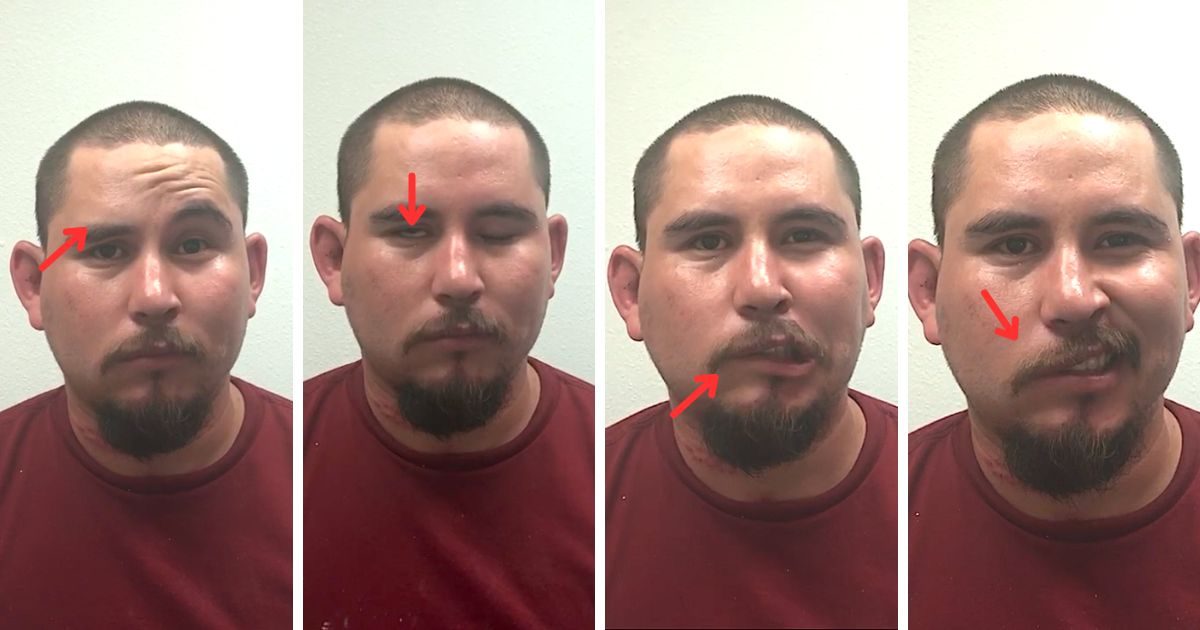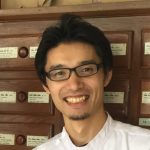When a Storm is Brewing: A Plano Resident’s Guide to Barometric Pressure Migraines
Living in Plano, you know the weather changes. Sudden storms and fronts cause barometric pressure migraines. Get help for the headaches and throbbing pain.

August 10, 2024
Hi, this is Satoru from hariQ acupuncture & herbs. In this blog, I will share the massage technique on how to improve from one of the most common and frustrating symptoms of Bell’s Palsy: being unable to close your eyes and blink.
I have been treating many Bell’s Palsy patients in my acupuncture clinic and have noticed that some of them struggle to close their affected eye or blink. Although most patients find relief from my home remedy technique involving a facial roller, some moderate to severe cases may not improve within a month or may experience a slower recovery. To address this, I have created another home remedy technique that you can use to stimulate blood circulation and improve the ability to close your eyes or speed up the recovery from Bell’s Palsy.
It’s important to take care of this symptom, as the inability to close your eyes can lead to blurry vision, watery eyes, and even permanent eye damage. For more information on how to manage your Bell’s palsy symptoms, please go to my other blog post “What To Do When You Get Bell’s Palsy: Simple Advice.”
We understand this can be a lot of information and overwhelming: if you are looking for more support and answers, set up a free consultation with our Bell’s Palsy Specialist, Satoru Ozawa. Share your story, get your questions answered, and learn how you can set yourself up for tremendous success in achieving a healthy life.

Bell’s Palsy is a condition that causes sudden weakness or paralysis in the muscles on one side of the face. This condition occurs due to the inflammation or compression of the facial nerve, which controls the movement of the muscles responsible for facial expressions, including closing your eyes, blinking, and tearing. The exact cause of Bell’s Palsy is still unknown, but it is believed to be related to viral infections, such as herpes simplex virus or varicella-zoster virus. The symptoms of Bell’s Palsy typically appear suddenly and can range from mild to severe. If you suspect you have Bell’s Palsy, it’s important to seek medical attention as early as possible to rule out a stroke or other disease-causing facial paralysis like Ramsey-hunt disease.
Bell’s Palsy is a condition that causes sudden weakness or paralysis in the muscles on one side of the face. This can lead to drooping the eyelid or corner of the mouth, difficulty smiling or closing the eye, and drooling. Other symptoms may include pain or discomfort around the jaw or behind the ear, headache, sensitivity to sound in one ear, or changes in taste.
After you go to the ER, you find out that you have Bell’s Palsy. You might wonder if you have severe or mild. You can check out my other blog post on how to scale Bell’s Palsy to see if you have severe or mild. When you are unable to close your eyes, you can start adding this technique to speed up the recovery process.
As I mentioned earlier, Bell’s Palsy is involved by a 7th cranial nerve called the facial nerve. The facial nerve branches out in five different ways, and the first and second branches, called temporal and zygomatic branches, control your eye closure. When the Orbucularis Oculi muscle surrounds your eye, like an orbital shape, your eyes are able to shut down.
There are 12 points that you need to massage by using your finger or thumb. These points are based on the meridian and channels from the traditional oriental medicine, which acupuncturists use to treat Bell’s Palsy.
To locate the first point, put your finger between the inner eyebrow and the inner corner of the eye. You should feel a slight depression of the bone. This point is very close to the acupuncture point called UB1 or “Seimei” in Japanese. Use your thumb or finger to press down towards the nose, as if you were trying to force your eye to close. Repeat this motion ten times.
To locate the second point, place your finger at the supraorbital ridge, which is just below your eyebrow. The ridge will feel like a depression in the bone. This area is the pathway of the supratrochlear artery and nerve, which nourishes the orbicular oculi, frontalis, and corrugator muscles that help you close your eyes. To massage this point, use your thumb and press towards the bone in a circular motion. You may feel some soreness or tenderness, but it’s normal as long as it’s tolerable. Repeat the circular motion 10 times.
The third point is located next to the 2nd point on the outer side of the orbital bone. This point houses the lacrimal gland, which is responsible for controlling your tears. To massage this point, gently press against the bone and move your fingers in circular motions for about 10 times.
The fourth point to consider is located at the inner corner of the eyebrow. When you press down gently with your finger, you will feel a slight indentation called the frontal notch. This area is where the supratrochlear artery passes through, providing blood flow to both the forehead and upper eyelid. This spot also happens to be the same location as the acupuncture point known as UB2, or “Sanchiku” in Japanese. This point is believed to be beneficial for eye health. To stimulate this point, simply massage it in circular motions for 10 repetitions.
To locate the fifth point, start from the middle of your eyebrow and follow it with your finger. You will feel a depression or notch known as the supraorbital notch, which supplies blood to the lavator palpebrae muscles that control your upper eyelid and eye closure. This point is close to the extra acupuncture point called “Yu Yao” or “Gyo You” in Japanese, which is used to treat eye and eyelid disorders. Once you find it, massage it in a circular motion 10 times.
The sixth point refers to the outer corner of the eyebrow. This acupuncture point is also known as SJ23 or “Shichikuku” in Japanese. It is beneficial for clearing the eyes and head and supporting the orbicularis oculi muscle to help in closing the eyes. To massage this point, use a circular motion and repeat it 10 times.
The seventh acupressure point is located on the lower eyelid, just on the inner edge of the lower orbital rim. You should be able to find a depression at this point, which can be very sensitive, so it’s important to be gentle when applying pressure. Press upwards towards the first point, and massage the area upward for ten repetitions.
The acupuncture point ST2, also known as “Shoukyu” in Japanese, is located at the eighth point in the middle of the lower orbital rim. This point has a small depression, and the infraorbital artery branches help supply blood flow to the lower eyelid. Its function is to regulate and clear eye circulation, which helps with redness, twitching, and supports the closure of the eyes. To stimulate this point, you can press against the orbital bone and rub in a circular motion 10 times.
The ninth point is located at the outer corner of the lower orbital rim. Press against the bone and move in circular motions for 10 repetitions.
The tenth point is located just outside of the outer corner of your eye. You can identify it as a small depression and it is also known as GB1 or “Doushiryo” in Japanese acupuncture. This point is located near the lateral palpebral ligament, which is the attachment of the orbicularis oculi muscle that helps to close your eyes. To activate this point, press against the bone and move your finger in a circular motion around it for 10 times.
The eleventh point is located just below the eighth point. When you investigate this area, you may notice a small indentation known as the infraorbital notch. This notch contains the infraorbital nerve which helps to supply the inferior palpebral muscle that controls the movement of the lower eyelid. This point is also referred to as ST2 in traditional Chinese medicine. Bell’s Palsy patients typically experience tightness in this area. You can massage this point in a circular motion 10 times to alleviate the tightness.
Point number 12 is located on your temporal area, approximately 2 inches away from the outer canthus. This extra acupuncture point is called “Tai Yang” or “Tai You” in Japanese and it is where the 1st and 2nd branches of the facial nerve, known as the temporal and zygomatic branches, are located. The facial nerve is responsible for controlling eye movement, eyebrows, and forehead. To stimulate this point, you can press against the bone and rub it in a circular motion 10 times.
Repeat the whole cycle 2 more times.
After you finish the whole cycle of eye massage for Bell’s Palsy, I want you to apply heat directly to your face. You can use a warm towel or a heat pack for about 20 minutes. The heat helps to increase blood circulation, soften the tissue, reduce inflammation, and soothe the pain.
It can be highly beneficial to perform this exercise every day, as it may accelerate your healing process and help you avoid being affected by permanent symptoms that can last up to 15%. As previously mentioned, Bell’s Palsy is a disease that is a race against time. Therefore, the earlier you take care of it, the higher the chances of healing quicker and faster. For a more proactive approach, you may want to consider alternative treatments such as acupuncture, which can help speed up your natural healing ability.
We'll be happy to answer your questions.
Certainly. Acupuncture has proven to be highly effective in treating Bell’s Palsy. During the initial acupuncture session, we assess your facial and muscle movements. If you are experiencing difficulty closing your eye or moving your mouth, our treatments will focus on reducing inflammation and swelling, as well as restoring movement in your face. Numerous studies have shown that acupuncture is highly practical in reducing pain and inflammation, as it can stimulate the body to release its natural painkillers.
Receiving acupuncture treatment for Bell’s Palsy as soon as possible is crucial for a better prognosis. Unfortunately, some patients delay treatment for months or even years after the initial onset, resulting in more complex and longer recovery times. Even then, there’s no guarantee of complete recovery.
Acupuncture is a highly effective treatment method that follows a simple rule when it comes to frequency. To get the most effective results, acute and new conditions require more frequent visits. Conversely, chronic and old conditions can benefit from widespread treatments. For example, if you just have acute Bell’s palsy, you will benefit from 2-3 treatments per week. On the other hand, chronic cases will only require one visit per week. Trust your acupuncturist to prescribe the right frequency for your condition and experience the benefits of acupuncture for yourself!
If you or a loved one was diagnosed with Bell’s Palsy and want to learn more about Acupuncture and whether it’s appropriate for your case, send us a message through our contact page. Thank you for taking the time to read this blog post! I appreciate your interest and hope to see you again for future posts.
We understand this can be a lot of information and overwhelming: if you are looking for more support and answers, set up a free consultation with our Bell’s Palsy Specialist, Satoru Ozawa. Share your story, get your questions answered, and learn how you can set yourself up for tremendous success in achieving a healthy life.
The following blogs discuss natural remedies, acupuncture, Chinese medicine, Chinese herbs, and tips for maintaining good health.
Living in Plano, you know the weather changes. Sudden storms and fronts cause barometric pressure migraines. Get help for the headaches and throbbing pain.
As a practitioner, my focus is on giving you the best tips for your health. But today, I want to share one that is at the heart...
Vestibular migraine: episodes of vertigo, dizziness, and imbalance without head pain. A neurological condition, not a simple balance issue.

Satoru Ozawa, L.Ac, ATC
hariQ acupuncture & herbs
Licensed acupuncturist, Certified Athletic Trainer and Chinese herbal specialist. With his 10 years of experience in Oriental Medicine, he will recommend the best natural Remedies, including Acupuncture, Chinese herbs, and health tips to relieve your suffering.
Wow, I had never thought about it in that way before You have really opened my eyes to a new perspective Keep up the great work!